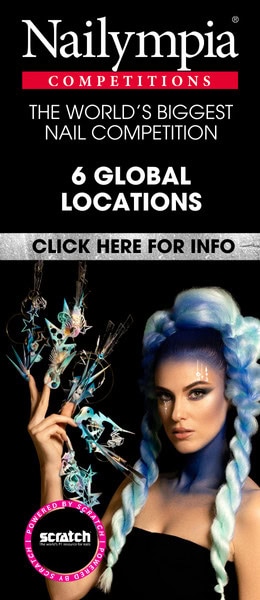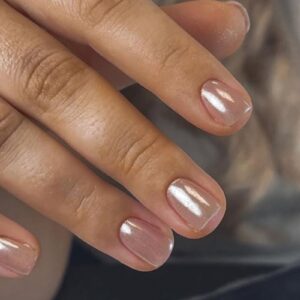How Covid-19 is changing the world of beauty
By Sophie Nutt | 01 October 2020 | Expert Advice, Feature

A recent report by Emily Gerstell, Sophie Marchessou, Jennifer Schmidt and Emma Spagnuolo from McKinsey & Company analyses the likely effects of Covid-19 on the beauty industry over the next three to six months, as well as how the pandemic could change the industry in the longterm.
“The industry has responded positively to the crisis, with brands switching their manufacturing to produce hand sanitisers and cleaning agents and offering free beauty services for frontline response workers,” the report states. “At the same time, the industry’s leaders have a responsibility to do their best to ensure that their companies survive. The global beauty industry generates $500 billion in sales a year and accounts for millions of jobs, directly and indirectly.
The short-term outlook for the beauty industry
Even though the economic magnitude of the Covid-19 pandemic on brands and retailers will be far greater than any recession there are signs that the beauty industry may once again prove relatively resilient.
“In most major beauty-industry markers, in-store shopping accounted for up to 85% of beauty product purchases prior to the Covid-19 crisis, with some variation by subcategory. Even online-savvy American millennial and Get-Z’s made close to 60% of their purchases in stores,” the report continues. “With the closure of premium beauty product outlets because of Covid-19, approximately 30% of the beauty industry market was shut down.”
In regards to beauty product sales habits, the report states that increased online sales are not offsetting the decline in in-store sales, and that beauty product sales at essential retailers are down; while brick-and-mortar drugstores and mass-market and grocery stores remain open, their customer traffic and revenues have plummeted. The Boots UK drugstore chain reported its overall sales fell by two-thirds between March 25 and April 3 2020, with beauty product revenues contributing to the decline.
“Retailers and brands are turning to promotions to bring in consumers and clear inventory. In an uncharacteristic move, several prestige brands are offering discounts online of up to 40%. As beauty brick-and-mortar stores reopen, we expect to see more promotions aimed at reclaiming customer foot traffic.”
When it comes to what beauty products are being purchased, make-up and cosmetics are seeing a decline in interest from consumers due to mask-wearing and working from home. “Given the realities of working from home, physical distancing and mask-wearing, it has become much less important to wear make-up and fragrance,” the report states. “For prestige brands, we see 55% and 75% declines in cosmetic and fragrance purchasing, respectively, versus a year ago.
“By contrast, skincare, haircare and bath and body products appear to be benefiting from self-care and pampering trends. NPD recorded that sales of luxury hand soap in France were up 800% the week of March 16 2020, as the country went into lockdown. Zalando reported a boom in pampering and self-care beauty categories, including candles, aromatherapy and detox products; sales of skin, nail and hair care products were up 300% year-on-year. That is consistent with results from Amazon, for which most make-up sales in the United States are showing slight declines, compared with the same month in 2019, while sales for nail care products (218%), hair colouring (172%) and bath and body products (65%) are way up.”
While many consumers have faced economic difficulties after the Covid-19 crisis, given the loss of jobs and savings, many say they are cutting back on spending. As a result, online sales of prestige brand nail polish have seen double-digit growth every week since lockdown began in March. This surge in DIY nail care has some speculating that the current crisis’ lipstick effect has an added dimension – the ‘nail polish effect’.
The long-term impact of Covid-19 on the beauty industry
Pre-Covid trends will likely accelerate, with direct-to-consumer e-commerce, such as brand websites, stoppable social media platforms and marketplaces becoming more important. “Across the globe, consumers indicate they are likely to increase their online engagement and spending,” the report finds. “Beauty industry players will need to prioritise digital channels to capture and convert the attention of existing and new customers. On the operations side, the use of artificial intelligence for testing, discovery and customisation will need to accelerate as concerns about safety and hygiene fundamentally disrupt product testing and in-person consultations.
While the beauty industry may be in a relatively stronger position than other consumer categories, 2020 will be one of the worst years it has ever endured. “We believe, however, that the industry will remain attractive in the long run,” concludes the McKinsey & Company report. “The Covid-19 crisis is likely to accelerate trends that were already shaping the market, such as the rise of the global middle class and the use of e-commerce, rather than mark entirely new ground. Consumers across the globe are showing by their actions that they still find comfort in the simple pleasures of a ‘self-care Sunday’ or a swipe of lipstick before a Zoom meeting.
“Even before the pandemic, the definition of ‘beauty’ was becoming more global, expansive and intertwined with individuals’ sense of wellbeing. The Covid-19 crisis is not likely to change these trends and, in that, there is reason for hope.”
Read the whole McKinsey & Company ‘How Covid-19 is changing the world of beauty’ report, click here.

Read the latest issue










